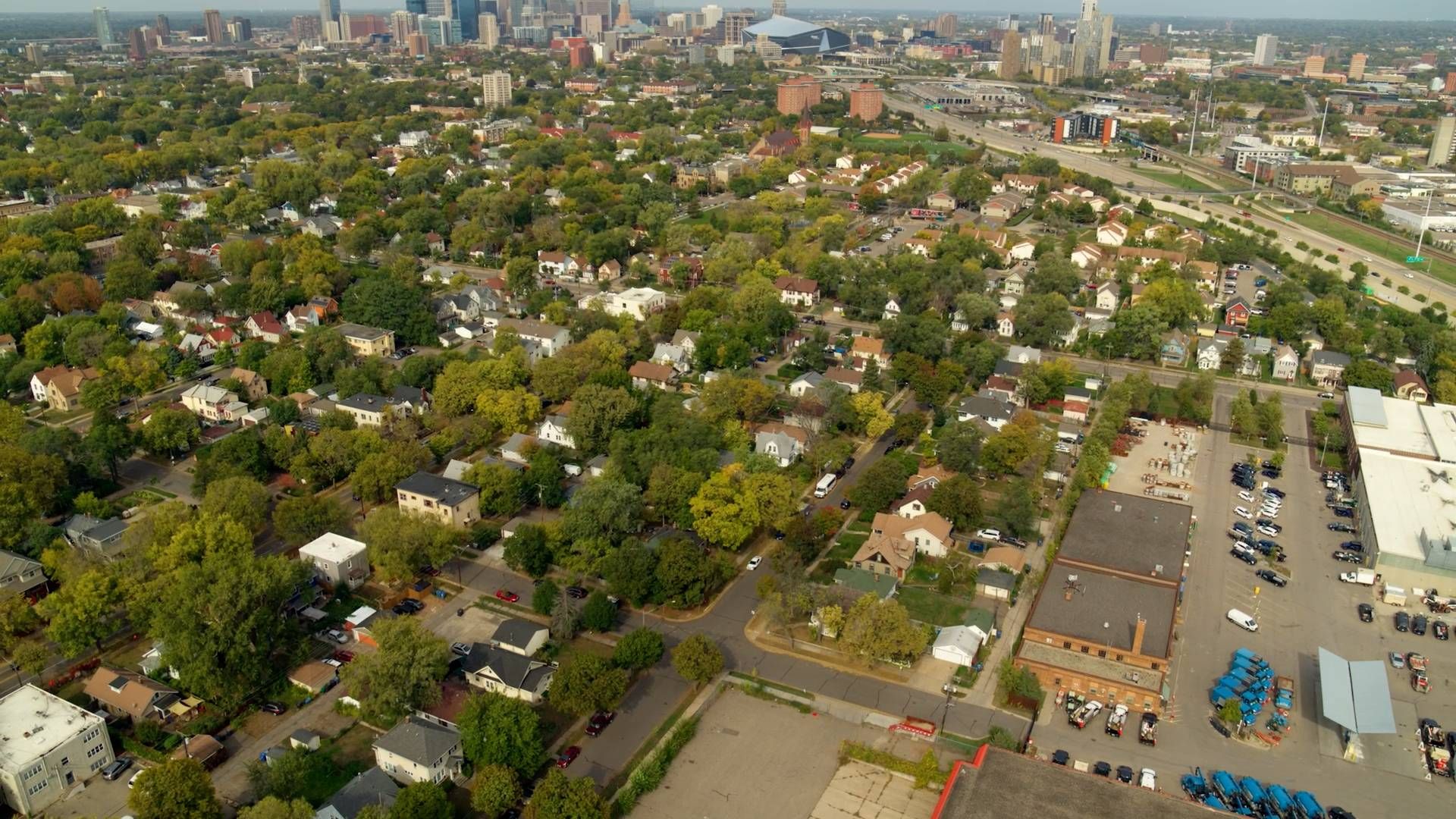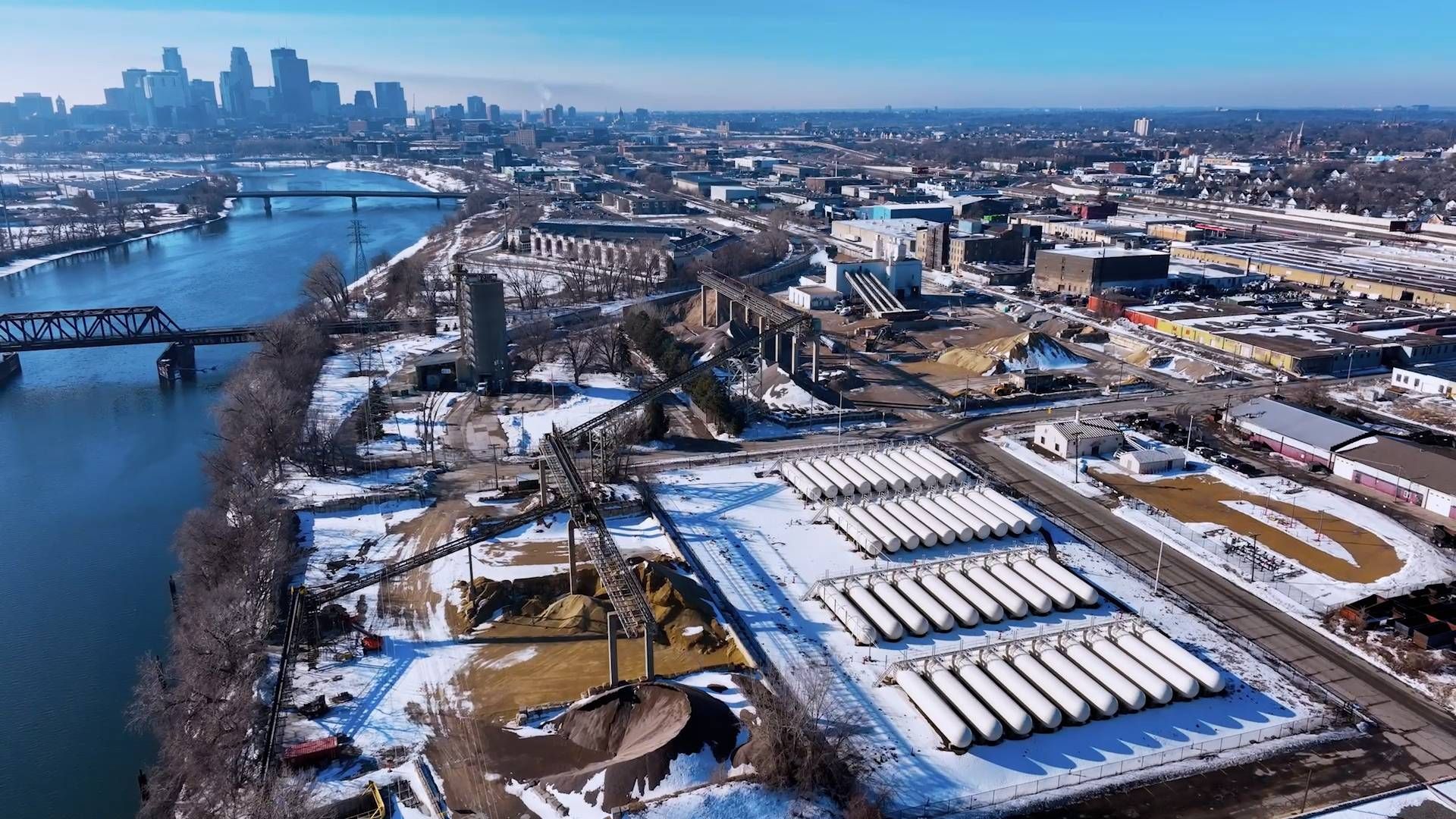Racism Is In the Air We Breathe
Minnesota's history of racial redlining might have ended in 1968 - but the lasting impacts run deep today.

When people first hear the term "environmental racism," they may wonder how ecology and bigotry intersect, especially in Minnesota. It can take many forms, but one common version looks like this: Decades of intentional housing discrimination concentrated generations of Black and brown families in less desirable, less safe locations without parks and streetlights and speed limits, and closer to health hazards like industrial zones, railways, freeways and polluted waterways.
Redlining and racially-restrictive covenants persisted legally for decades, creating and reinforcing low-opportunity zones with poorer schools, lower-paying jobs, higher crime rates, poorer health and lower life expectancies, not to mention bleaker prospects for the futures of children. Undereducated and unhealthy children are less likely to land high-paying jobs, continuing the cycle over generations. These racist practices effectively prevented Black homeownership in these areas, and with it the generational wealth that would have transformed the future prospects of countless families of color. Our entire community is poorer as a result, and the reasons why were buried and forgotten. Racism doesn't need to be overt bigotry to cause deep harm.
The Civil Rights Movement put an end to those racist housing practices in our legal code when the landmark Fair Housing Act was signed in 1968. But the inequity created by those practices still exists, and still plays out in the lives of generations of Minnesotans of color. A drive through Minneapolis neighborhoods like Hawthorne and Phillips reveals a vital, diverse tapestry of cultures and people, tight-knit communities, bustling schools, and small-business entrepreneurship like nothing the suburbs could imagine. Somehow, they thrive. Despite decades of under-investment and over-policing, despite the red lines and the white flight, they live and find joy and meaning and belonging.
Racism is lethal, and not only when it's violent
In the same way that racist redlining and covenants decades ago have left our whole community poorer in every respect, environmental racism hurts all of us. Casual business decisions and government policies have life-and-death impacts that are easy to miss if your community is not the one paying the greatest price. But we will all pay eventually.
Perhaps things are changing. More white Minnesotans are seeing the connections that their Black and brown neighbors have known and described for decades. They are recognizing the links between the myriad large and small racially yoked events and environments at work as a landscape of injustice rather than isolated incidents, flukes in an otherwise just world. Moreover, racism is now being framed not only as a justice issue, but also a health issue. Minnesota's House of Representatives and the City of Minneapolis recently adopted resolutions declaring racism a public health crisis, a drain on our healthcare systems and taxpayer dollars.
That can sound a bit impersonal and abstract, especially if it doesn't reflect your own lived experience. So Twin Cities PBS followed two community members whose lives have been profoundly impacted by environmental racism. They have been called into activism because their communities needed brave warriors to protect them from the lethal dangers we've put into our air, water and soil, and the barriers to justice and equity we've put into our systems.
In My Experience: Cassandra Holmes

At the eastern edge of the vibrant Phillips neighborhood in South Minneapolis, a pesticide plant once dumped vast amounts of deadly arsenic into the air and soil for decades. Millions of dollars of EPA Superfund cleanup paid for the replacement of 50,000 tons of soil around homes and businesses. But for generations of families in the area — particularly the Indigenous community centered in the Little Earth housing complex just blocks from the former plant — the human cost is very real, and the damage and injustice is ongoing.
In this video, meet Little Earth community member and activist Cassandra Holmes to discover why she fights against environmental racism and where she draws strength from to keep fighting.
Sources: EPA, Wilder Foundation/Blue Cross Blue Shield, MPCA, WHO, Little Earth Urban Farm, Shield 1 Foundation
In My Experience: Roxxanne O'Brien

In North Minneapolis, a long, narrow strip of the Mississippi River shoreline is occupied by heavy industry. To the west is the vast, multicultural Hawthorne neighborhood. These industrial facilities are held to strict pollution control measures, with varying degrees of success. One such facility regularly made news headlines for a decade, and not in a good way. Northern Metals Recycling operated a metal shredder that failed to meet emissions limits essentially from day one. Perhaps destined to fail from the start, Northern Metals requested a 900% increase in their toxic emissions cap. When word of this reached one particular community activist, she spent the next 10 years of her life fighting both the polluter itself, but also (in her view) uncooperative city leaders and departments more interested in preserving the status quo than in protecting the health and wellbeing of its residents.
In this next video, meet Northside activist Roxxanne O'Brien and learn how her upbringing prepared her to become a tireless voice for justice, both against the lethal impacts of racism on Black and brown bodies, and for a community-led vision for development and investment in the Northside.
Sources: MPCA, Star Tribune, MN Center for Environmental Advocacy, CMEJ
There is growing awareness of the astonishingly deep roots of our racism that it's built into our neighborhoods, language, health care, education, law enforcement and religion. Our most pernicious racism is not overt and personal, but covert and institutional.
It took the likes of Dr. King and millions of civil rights activists marching for years to force white leaders to make some of our overt racism illegal. What kind of movement will call white Minnesotans to account for our lethal covert racism?
With additional reporting by Kyeland Jackson, and research and videography by Sergio Rapu.
